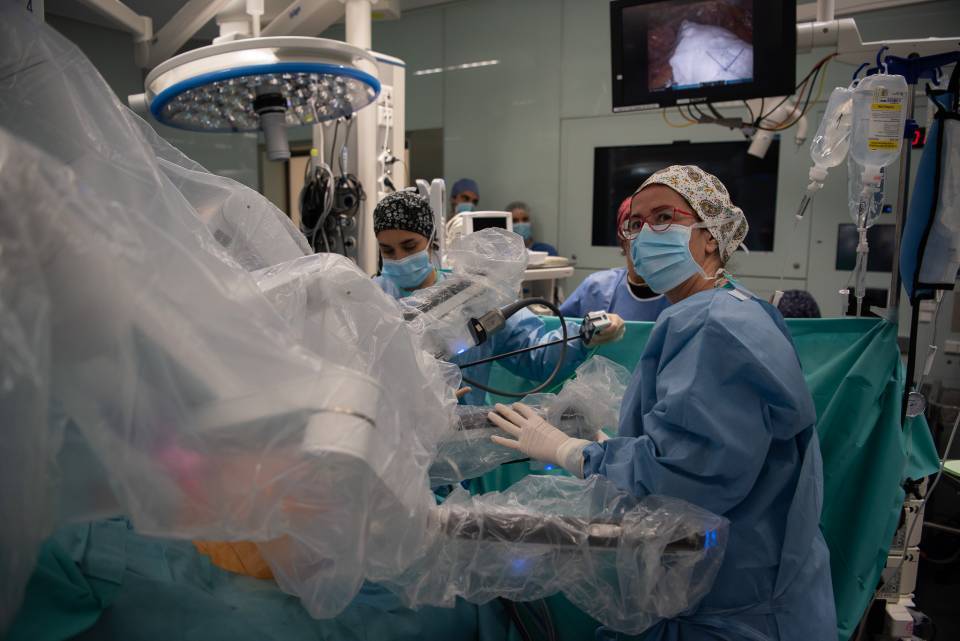The Hospital Clínic Barcelona-IDIBAPS reinforces its leadership in research into Parkinson’s disease with the launch of the Smell Test Direct (ST Direct), a new program aimed at detecting possible cases of Parkinson’s disease in its very early stages through a simple smell test for people over 40. The Clínic-IDIBAPS is the centre coordinating this project at national level, and one of the few European centres participating.
Answer the survey and participate in the project
This initiative forms part of the Parkinson’s Progression Markers Initiative (PPMI) international study, promoted by the Michael J. Fox Foundation, which aims to identify biomarkers that can predict and track the progression of Parkinson’s disease before motor symptoms such as tremor, slowness of movement or difficulty walking appear. The smell test has established itself as a promising tool for detecting loss of smell, an early sign that can precede the clinical onset of the disease by up to ten years.
“Being able to detect Parkinson’s disease in its earliest stages opens up the door to earlier intervention, better treatment options, and advances in preventive medicine," explains Dr M. Josep Martí, neurologist at the Parkinson’s Disease and Movement Disorders Unit at the Clínic and head of the IDIBAPS ‘Parkinson’s Disease and other Neurodegenerative Movement Disorders: Clinical and Experimental Research’ group.
Smell test accessible and open to public participation
In order to involve the public in the fight against this neurodegenerative disease, the ST Direct project invites people over 40 to do a simple smell test at home, which will detect changes in their sense of smell. People with a significant decline could be candidates for more specific tests within the PPMI, thereby contributing to a better understanding of the phases prior to the clinical diagnosis of Parkinson’s disease.
“We want to reach people who do not have motor symptoms yet, but may have alterations that help us better understand the onset of the disease. The test is free, non-invasive and can have a major impact on research”, adds Dr Alícia Garrido, neurologist at the Parkinson’s Disease and Movement Disorders Unit.
A decade leading international research from Barcelona
The Hospital Clínic Barcelona-IDIBAPS has formed part of the PPMI international consortium since 2013, and is the only centre in Catalonia participating actively in this ambitious global project. Since then, it has enrolled more than 100 volunteers in the international registry, contributing to a global cohort of over 3,500 participants. This participation has been key to identifying new genetic, biological, and clinical biomarkers that are already transforming the way the disease is studied, diagnosed, and treated.
The PPMI is currently considered the largest multicentre study on Parkinson's disease worldwide, and has become a model of collaboration between institutions, researchers, and patients. Thanks to the data obtained and the systematic collection of biological samples, it has been possible to advance towards a deeper understanding of Parkinson’s disease and its causes.
Parkinson’s disease: multifactorial and difficult to diagnose
Parkinson’s disease is the most common neurodegenerative disease after Alzheimer's disease. It is characterized by slowness of movement, stiffness, tremor, and gait disturbances. There is currently no cure or treatment that can modify the course of the disease, but many drugs and even surgical treatments are available to improve symptoms.
The onset is gradual and the evolution progressive. It is currently considered a multisystem disease, with many non-motor symptoms in addition to motor symptoms
Parkinson’s disease is a common condition, and its incidence is expected to increase in the coming years. Its causes are not yet well understood, although genetic and environmental factors are known to play a role, and in some cases it is difficult to diagnose accurately.
At present, there is no cure, but there are measures to stabilize and control symptoms. One of the main problems, however, is that, by the time the most characteristic motor symptoms appear, many of the dopamine-producing neurons in the brain, which are essential for motor function, have already died and their loss is irreversible.




